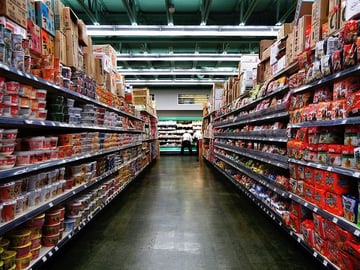Business decisions are often focused on return on investment, and this is no different when budgeting for food safety and traceability software. Read our Crafting the Case for Traceability E-Book to learn how to communicate the value of traceability software to key internal stakeholders.
After years of illness outbreaks, broken brand promises and whistleblowing investigations, the entire supply chain is under an intense microscope. And that puts food safety and quality assurance professionals in a difficult position. On one hand, shifts in industry standards towards better food quality checks and streamlined systems are welcomed, knowing that they keep consumers safe. On the other hand, making sure the team—and everyone the company does business with— adheres to new processes isn’t always easy.
Implementing changes to keep pace with the industry can require a mountain of paperwork during on-boarding, assessments, third-party audits and team alignment on centralized reporting procedures and overall food safety plans. However, even with proper training and consistent follow-up, there are plenty of opportunities for communication breakdowns and holes in supply chain reporting.
The only effective way to manage traceability and ensure all parties are on the same page is by committing to a centralized system, such as one centered on a supply chain traceability software, and implementing a more modern process. Saving time, improving efficiency and mitigating risks all contribute to a major return on investment for food safety and traceability.
Budgeting for new initiatives can often be challenging. This is true for new and innovative software solutions, although the consequences and long term impact of not acting now are greater than ever. We all know a recall will have major implications on a business, and it’s not a matter of if, it’s a matter of when. According to a joint industry study by the Food Marketing Institute and the Grocery Manufacturers' Association, the average direct cost of a recall to a food company is $10 million. Not only is there a high cost for not being prepared, but recalls also have long term costs in the form of depreciated customer trust, brand value, and overall value or the stock price of the organization.
Unfortunately for supply chain and food safety personnel, persuading leadership to invest in this solution can be a challenge. Make sure your entire team understands the overall operational efficiencies that can be attributed to food safety and traceability software. Solution implementation can directly result in time saving on major responsibilities like supplier management, quality incidents, and ensuring audit and compliance readiness. In the Crafting the Case for Traceability E-Book, we detail how you can make compelling, business-driven arguments for traceability software and gain C-suite buy-in.
Tag(s):




